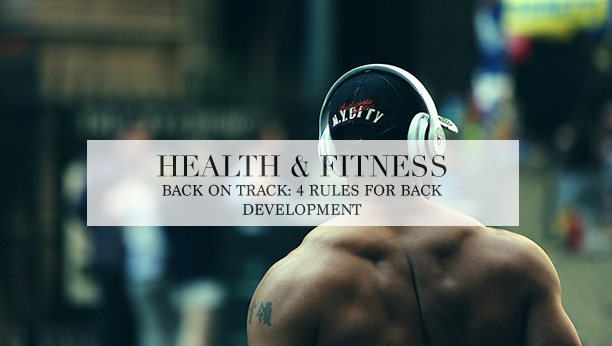You may be aiming to increase the strength and size of your back. The back is a large grouping of muscles that takes a lot of effort and determination to strengthen and grow. It often takes high volume training to be able to sufficiently stimulate the muscle group. This means that you will have to devote special attention to ensure that this larger muscle group, gets the training intensity, volume and overall training program required for optimal or even moderate growth and strength development.
If you need a starting point to build a training program that works, or you feel that your existing training program has not been effective enough to meet your goals. Then follow these simple rules for effective mass and strength development.
1. Use Full Range Of Motion
Don’t sell your muscles short! There are some muscles where you can reduce the range of motion and still see returns in muscle development. However, when you are training back, it is essential that you use the full range of motion.
Ensure that you engage the target muscle first when you initiate a movement. This improves muscle fibre recruitment and ensures that the target muscle is the working muscle that gets stimulated.
Allow for your muscles to stretch out. When performing pulls or rows ensure that your muscles get a full stretch as this will maximise the breakdown of the muscle fibres. For a full stretch, especially under an upper-back rowing exercise, allow for your shoulder blades to come apart and fully stretch out.
At the other end of the movement ensure that the muscles are squeezed and fully contracted hard at the peak of the pulling movement.
2. Train Twice A Week
Your frequency of training may need to increase. This tends to be the case for reasonable to well-conditioned individuals that have built up a good foundation of muscle mass and strength. There come to a point where the muscles need to be stimulated with greater frequency to force physiological changes – specifical improvement in terms of mass and strength development.
As the back is a large area, your workouts may not be sufficient enough to stimulate the entire area of your back effectively. If you increase your workout frequency this gives you the option to rotate exercises or target different regions specifically, so that the entire back gets a focused and effective workout that’s spread over multiple workout sessions. An example could be to go heavy in the first session with rows and deadlifts and then a session that’s focused on the details such as pull-downs, rear delts flys and high-rows. However you set out your regime, always allow for full recovery, this is usually about 72 hours between workouts.
3. Attach Your Weaknesses Head On
There are those few areas where you are lagging, where it seems like it doesn’t respond to training to the same degree or that you have a disliking for working a particular region. These tend to be the weak point on your body and it often requires you to go against your body’s “natural” movement during exercises. This makes it seem much more challenging to perform. However, your body often displaces tension around your muscles in a way that causes least effort. This doesn’t help your muscle development as you will not be targeting the muscle with great effect. You have to address this problem head on!
If you have a lagging body part we suggest that you start with this area first off in your workouts. This will give you the energy and strength needed to control the tension load onto the target muscle. The second tip is two lighten up the resistance and instead focus on the movement and form. Work through the full range of motion and squeeze and contract hard at the peak of the contraction, focusing the tension on the target muscle. Finally, however difficult it may be now, it will become easier over time, you just need to put the effort in. You never know, it may actually turn out to be a strength as time goes by.
4. Maintain Mind-Muscle Connection
This is overlooked far too often during training. As mentioned, the body will move in a way that’s easiest and causes the least effort. This means that the target muscle often doesn’t obtain the highest tension load that it could otherwise sustain. Mind-muscle connection is the ability to activate the target muscle using thought. This ability will enable you to activate the correct muscles during an exercise routine, allowing the lifter to steer neural drive to and away from various muscles without changing form. This ultimately improves the level of activation of the muscle fibres – essential for growth.
How would you apply this to your workouts? First, learn what a full contraction feels like – this is something many people fail with big time – often focusing on the movement rather than the degree of muscle stimulation. Go through the motion without weights and try to tense the target muscle as hard as possible. Use mirrors to watch for form or you could use a free hand to check whether the target muscle has achieved full tension. Once you have established the form and have understood how to maximise the tension, add resistance. Use a light weight and follow the exact same motion as previous – squeezing and apply as much tension possibe towards the target muscle. Once you have mastered your form, then apply a greater resistance to challenge the muscles, but make sure the same technique is applied and the same level of tension is achieved.

